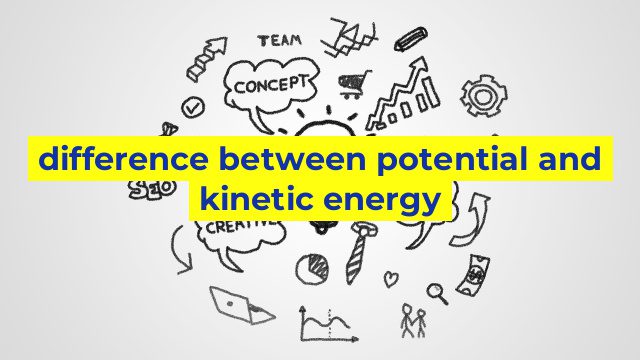Difference between Potential and Kinetic Energy
When it comes to physics, energy can be classified into different types, such as potential energy and kinetic energy. While both types of energy are essential and play significant roles in different systems and scenarios, there are some significant differences between them that are worth exploring.
Definition of Potential and Kinetic Energy
Potential energy refers to the energy that is stored in an object due to its position or condition. It is the energy that has the potential to do work. On the other hand, kinetic energy is the energy of an object in motion. It is the energy that an object possesses due to its motion or velocity.
Units of Potential and Kinetic Energy
The unit of potential energy is Joule (J), the same as kinetic energy. However, the equation to calculate both forms of energy is different. Potential energy is calculated as mass times gravity times height, while kinetic energy is calculated as half of mass times velocity squared.
Examples of Potential and Kinetic Energy
A common example of potential energy is a ball at the top of a hill. At this position, the ball has the potential to do work because of its position. When the ball is rolled down the hill, it gains kinetic energy as it picks up speed due to gravity. Another example of potential energy is a stretched rubber band. When released, the rubber band converts its stored energy into kinetic energy as it snaps back into its original shape.
Another example of kinetic energy is a moving car on the road. As the car moves, it possesses kinetic energy due to its motion. A thrown ball also has kinetic energy caused by its motion.
Conclusion
In conclusion, potential and kinetic energy are two essential types of energy. Potential energy is energy that an object possesses due to its position or condition, whereas kinetic energy is the energy of an object in motion. These concepts are crucial in understanding the laws of physics, and it is essential to differentiate between them to use them appropriately in different systems and scenarios.
Table difference between potential and kinetic energy
| Energy Type | Definition | Example |
|---|---|---|
| Potential Energy | The energy that an object possesses because of its position or condition | A compressed spring, a ball held up in the air, water in a dam, a stretched rubber band |
| Kinetic Energy | The energy of an object that is in motion | A moving car, a spinning top, a thrown baseball, a rollercoaster going down a hill |


